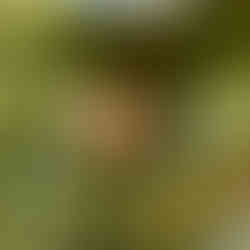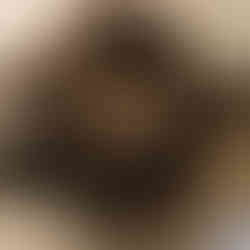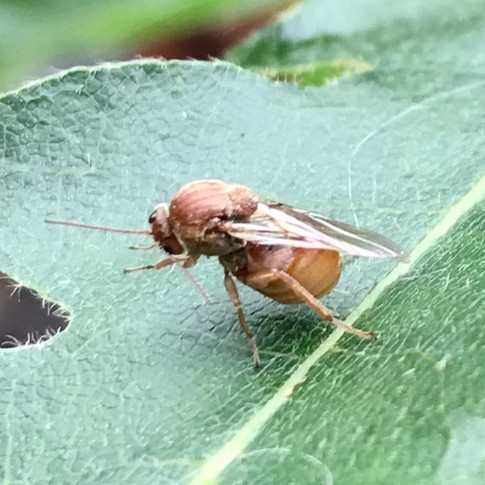Making medieval ink - a guide to foraging for oak galls
- Sara Charles
- Aug 31, 2020
- 4 min read
Updated: Jul 1, 2021
Are you interested in making traditional medieval ink from oak galls, but not sure what to look for? This is a quick guide to foraging for galls in your local area. Making iron gall ink is not only a great creative process, but you end up with a really useful product and have the satisfaction of knowing that the main ingredients are locally sourced!
Galls are growths on trees, formed when a gall wasp lays its eggs. There are many types of gall wasps and they all form different shaped galls. Below is a selection of oak galls I've come across in my surrounding neighbourhood. Please note - these wasps are not evil and do not sting! They do not even look like wasps – they are more like small flies, and will not hurt you. Once the gall wasps have emerged, the galls can be collected and crushed. Mixed with ferrous sulphate, the tannins in the galls produce a lovely black ink, which has been used since classical times.
Clockwise: Marble gall, Spangle gall, Artichoke gall, Silk Button gall, Apple gall and Knopper gall
For making ink, we are only interested in three types, the marble, apple and knopper gall.
1. Marble Oak Gall
This is the best one for making ink. It's not native to the U.K., it was introduced from the Middle East in the nineteenth century, although it was well known in this country in the medieval period. It would have been traded, along with Aleppo galls, throughout the Mediterranean. The marble oak gall wasp (Andricus kollari), like most gall wasps, has a really strange lifecycle. An asexual female (pictured below, right) hatches from the round marble gall on an English oak tree in late summer. It flies off to find a Turkey oak tree, where it will lay its eggs on the buds. These eggs hatch sexual wasps, both male and female, in the spring, and they mate. When the female is ready to lay her fertilised eggs, she finds an English oak and lays an individual egg on the branch. When the larva hatches, it produces a chemical that induces the oak to grow a shell around the area, and thereby encasing the gall grub in a safe, woody nest. When the gall has grown to adulthood, the asexual female chews its way out, leaving behind a tell-tale escape hole.
Marble gall with exit hole and female gall wasp
Where to find: Anywhere there are English oaks and Turkey oaks growing together. Look on the underside of branches of young oak trees in late summer/early autumn. Young galls are green or yellow, turning brown as the wasp matures. They are hard and round, often found in clusters, about 1–2cm each. Make sure the gall has an exit hole if you don't want any surprises!
Ink: Very good quality, keeps well. It also develops a lovely rich smell, which reminds me of red wine (must be the tannins!).
Leaves and acorns of Turkey oak (left) and English (pedunculate) oak (right)
2. Apple Oak Gall
This is the one to look for if you want to stay true to the native fauna. The apple oak gall wasp (Biorhiza pallida) lays multiple fertilised eggs on the oak, which then forms a spongy, irregular-shaped growth. An apple oak gall will have numerous small exit holes visible, up to thirty. Like the marble gall wasp, they also have two alternate lifecycles. The asexual females that emerged from this gall will stay on this tree, but fall to the ground to lay eggs in the roots. The sexual generation will then hatch from these eggs, and the female climbs up the trunk to lay the fertilised eggs.

Apple oak gall with exit holes from multiple wasps
Where to find: Young oak trees in midsummer, on low down branches. They are red at first, turning brown as the larvae develop. They are 3–5cm diameter and can be quite soft and crumbly, so remove with care.
Ink: Apple galls supposedly produce an inferior ink, which is why imported galls were preferred. Although I found that the ink it produced was just as good quality as marble galls, it did not keep as well, and went very mouldy through the winter. Despite removing as much of the mould as possible, it had a grainy texture that meant the ink did not flow smoothly. Good quality if used straight away!
Apple gall ink that went mouldy over the winter
3. Knopper oak galls
These have got to be one of the weirdest! The knopper gall wasp (Andricus quercuscalicis) is a relative newcomer, arriving from the Continent in the 1950s and spreading rapidly by the 1970s. Fertilised eggs are laid by the female into the developing acorn, which then mutates around it and produces this weird alien shape. The asexual female emerges, and, like the marble gall wasp, flies off to find a Turkey oak where it lays eggs that produce sexual male and female wasps.

Knopper oak gall
Where to find: Anywhere there are English oaks and Turkey oaks growing together. The galls tend to be on higher branches than the marble and apple galls, from around mid-July. Quite sticky.
Ink: I wasn't expecting much, but this also produced a good ink. You have to use the galls quite quickly, as they go mouldy after a few weeks, and they are really horrible to handle as they're so sticky. The ink took a while to develop into a deep black and still smelt much more 'woodlandy' than the other two. Not sure how it will keep as this year is the first time I've made it.

Knopper gall ink
So there you have it. Now is the best time of year to go out hunting for galls, and a lovely walk around your nearest country park not only gives you a great sense of wellbeing, looking for oak galls gives you a greater appreciation of the methods of the past. If you want to purchase an Ink Making Kit, please contact me: info@teachingmanuscripts.com.

Sara Charles is a 'historical re-maker', recreating medieval manuscript production techniques to understand the practices of the past.
Follow on Twitter @sarajcharles or #medievalstuffwithcats






























